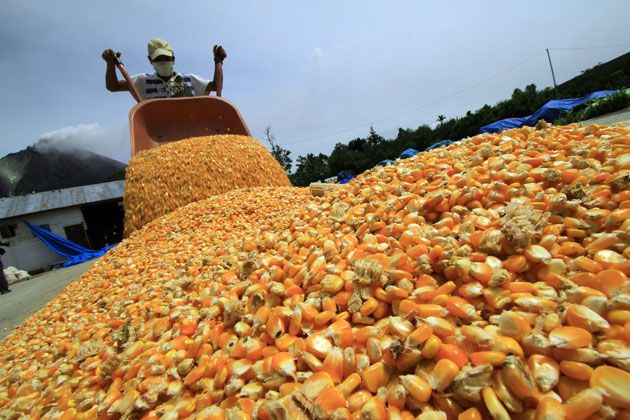Agricultural exports from Latin America and the Caribbean go 90% to other regions, according to a report by the United Nations Food and Agriculture Organization (FAO).
Most agricultural products are not traded within the region in which they are produced, but are exported to other regions.
Also, approximately 90% of exports of agricultural products from sub-Saharan Africa go to other regions, where they usually serve as inputs in the food industry.
Only in East Asia and the Pacific and in Europe and Central Asia, the majority of agricultural external sales remain within the region.
Food is more often traded intraregionally versus agricultural staples, suggesting that food processing facilities are generally located close to consumers.
In East Asia and the Pacific alone, intraregional foreign food sales are roughly equal to intraregional exports of agricultural commodities, or 60 percent.
Exports
In South Asia and in Europe and Central Asia, the shares of intraregional food trade, namely 10% in South Asia and 75% in Europe and Central Asia, are lower than those for agricultural products, that is, around 15% in South Asia and 90% in Europe and Central Asia.
The general geographical distribution, however, is maintained in the two sectors. Some regions invest heavily in intraregional trade, such as East Asia and the Pacific and Europe and Central Asia, and others tend to export globally, such as Latin America and the Caribbean and South Asia.
In some regions, there is a much more marked difference. Sub-Saharan Africa, for example, exports agricultural staples to other regions, but external food sales are relatively more pronounced within the region.
In both sectors, i.e. food and agriculture, the share of intra-regional exports in total exports has been increasing over time (1995–2018) in four of the seven regions (Sub-Saharan Africa, North America, South Asia and the Middle East and North Africa).
This percentage decreased in Latin America and the Caribbean, East Asia, and Europe and Central Asia. In sub-Saharan Africa and Latin America and the Caribbean, the share of intraregional imports of agricultural commodities is higher than that of intraregional exports, while the other regions tend to obtain agricultural products on a broader scale compared to the regional distribution of its exports.
Imports
The same occurs with foreign purchases of food, except in the case of Latin America and the Caribbean and Europe and Central Asia.
In most regions, the share of intraregional imports increased over time.
In line with the general slowdown in growth in agri-food trade, the growth rate of both intraregional and interregional trade was much faster in the 1995–2007 period than in the 2008–2018 period.

As a result of the full implementation of the African Continental Free Trade Area (AfCFTA), great potential is likely to emerge to increase trade between African countries, with an increase in agri-food trade forecast of between 20 and 30% in 2040 compared to a baseline without the AfCFTA.
![]()

